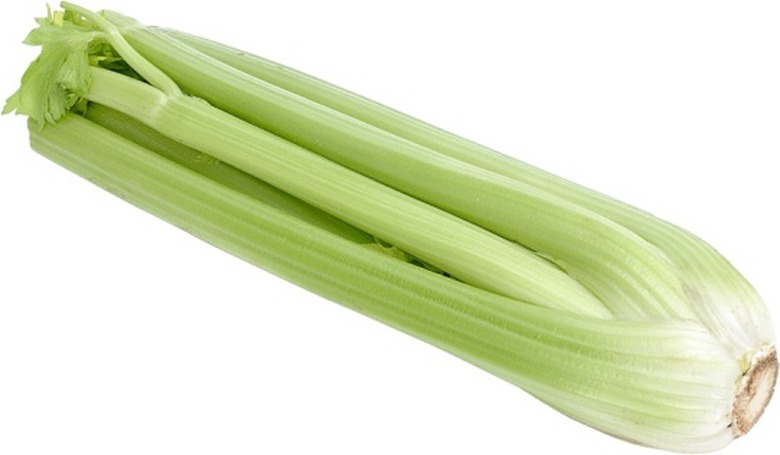Celery Flakes Vs. Celery Seeds
Celery, the vegetable commonly found in tuna salad or eaten as a snack with cream cheese or peanut butter, also comes in condiment form. Celery flakes and celery seeds are often sold in the spice section and used to add flavor to dishes. The flakes and seeds have different flavors and different culinary uses.
Celery Flakes
Celery flakes are dried pieces of the celery stalk and leaves. The plant is harvested, cleaned and set in a warm, dry area to remove any moisture. After the celery is dried, it is crumbled into small pieces, or flakes. Replace fresh celery with celery flakes in recipes if needed. When the vegetable is dried, the flavor intensifies, so you need only a small amount of celery flakes compared to fresh celery. For example, 1 tsp. of celery flakes is the equivalent of 2 tbsp. of fresh celery.
- Celery, the vegetable commonly found in tuna salad or eaten as a snack with cream cheese or peanut butter, also comes in condiment form.
- When the vegetable is dried, the flavor intensifies, so you need only a small amount of celery flakes compared to fresh celery.
Celery Seeds
Celery seeds do not come from the celery you're familiar with from the produce aisle. Instead, the seeds are from smallage, which is a wild form of celery. Smallage has a more bitter taste than standard celery, so its stalks are generally not consumed. The plant produces the seeds in its second year of life. Celery seeds are actually very small fruits. They are usually brown in color. You can find them either fresh or dried.
- Celery seeds do not come from the celery you're familiar with from the produce aisle.
- Instead, the seeds are from smallage, which is a wild form of celery.
Uses
Celery seeds and flakes are commonly used in cooking. The flakes can replace fresh celery in soups or other recipes, while the seeds add flavor to potato salads or barbecue rubs. Celery seed plays an important role in Old Bay Seasoning. Combined with sodium, it becomes celery salt, a key component in bloody mary cocktails. The seeds are small enough to use whole in recipes; ground seeds may taste more bitter.
Health Benefits
Celery seed may have some health benefits, according to the University of Maryland Medical Center. The seeds have been used for thousands of years in ayurvedic medicine to treat conditions such as gout, high blood pressure and arthritis, although there are no conclusive scientific studies that support celery seed as an effective treatment for those conditions. You may find celery seed tablets or extract, which are designed to be taken as supplements. If you decide to try using celery seed as an herbal remedy, talk to your doctor first.
- Celery seeds and flakes are commonly used in cooking.
- The flakes can replace fresh celery in soups or other recipes, while the seeds add flavor to potato salads or barbecue rubs.
